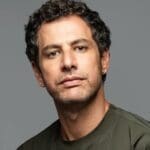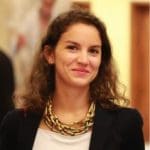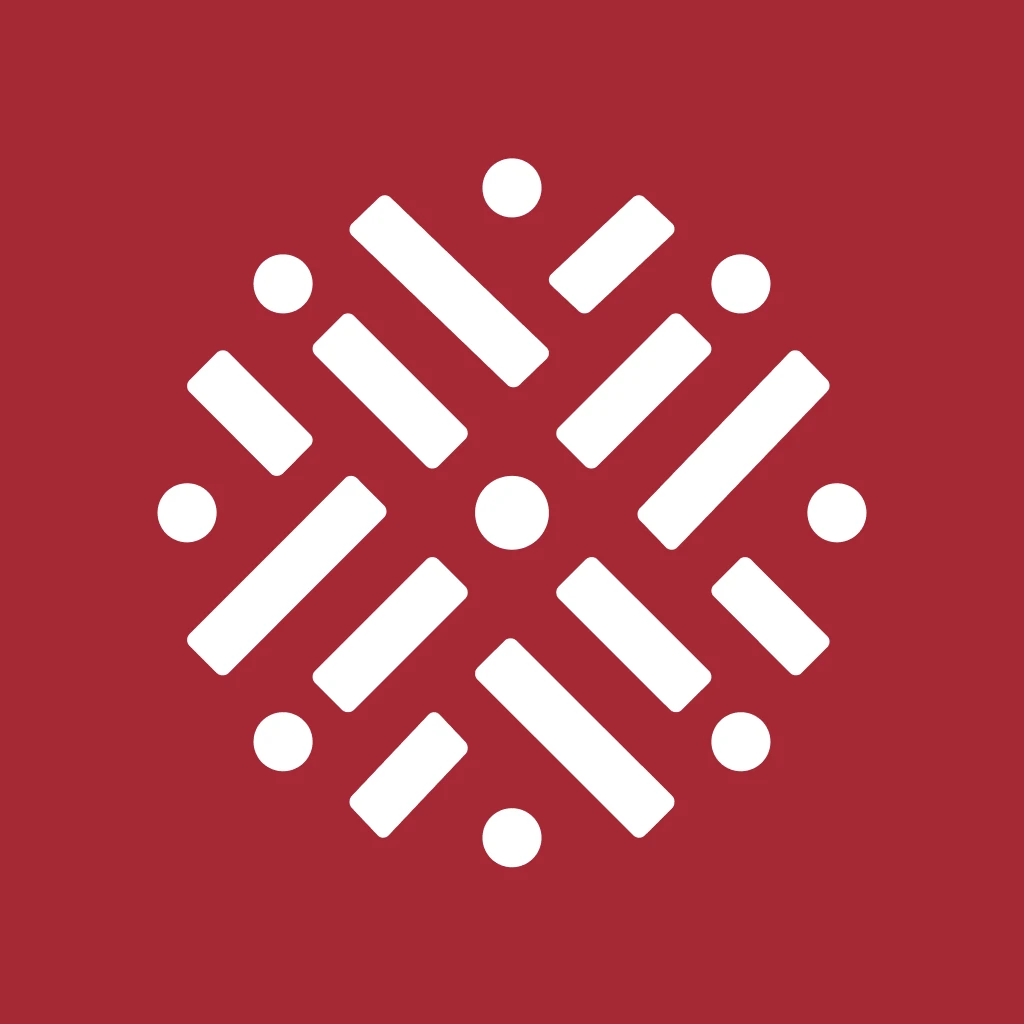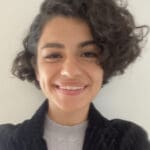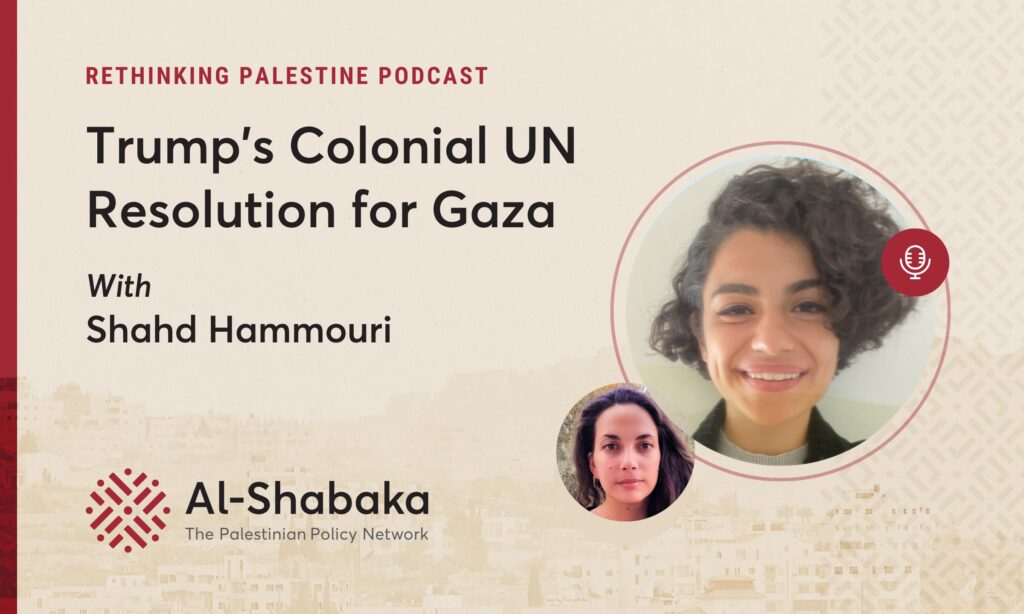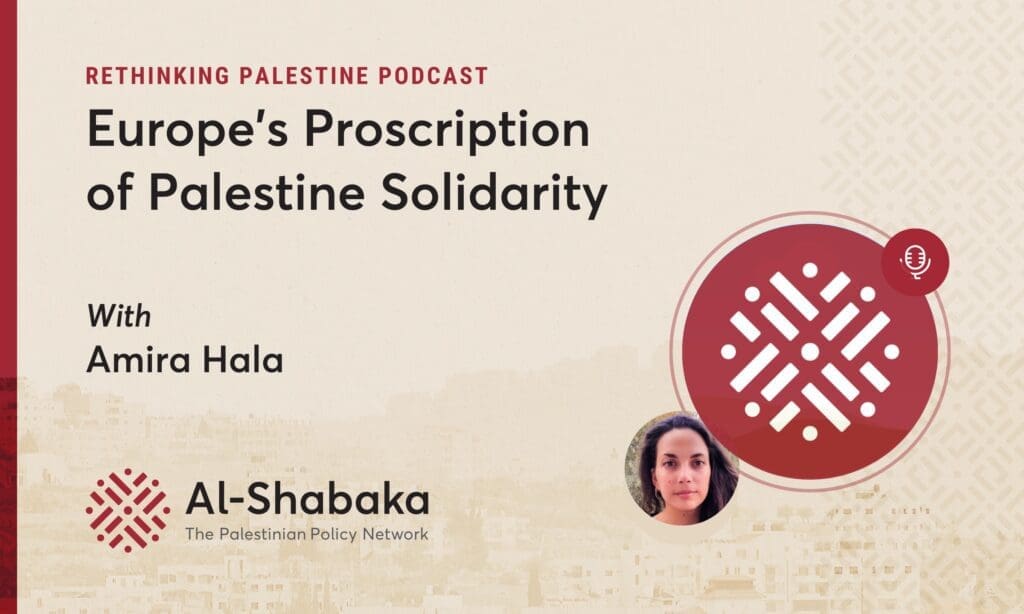About This Episode
Episode Transcript
The transcript below has been lightly edited for brevity and clarity.
Riya Al-Sanah 0:00
Palestinian Bedouins will determine the lifestyle that they have. They don’t want to live in cities and towns. We are agricultural communities that have an intimate relationship to the land, and they want to keep that and they will fight to keep that. And for Israel, that is really scary because it means that it has lost the ability to exert complete and total control.
Yara Hawari 0:29
This is Rethinking Palestine, a podcast from Al-Shabaka, The Palestinian Policy Network. We are a virtual think tank that aims to foster public debate on Palestinian human rights and self-determination. We draw upon the vast knowledge and experience of the Palestinian people, whether in Palestine or in exile, to put forward strong and diverse Palestinian policy voices. In this podcast, we will be bringing these voices to you, so that you can listen to Palestinians sharing their analysis wherever you are in the world.
The Naqab, also commonly known in English as the Negev, has faced unrelenting colonization since the establishment of the state of Israel in 1948 on top of Palestine. It is Palestine’s largest district covering over 13,000 square kilometers. Half of colonized Palestine. Now following the ethnic cleansing in 1948, 90,000 Palestinian Bedouins were forcibly displaced, leaving only 13,000 or so behind. Since then, this surviving community has been crammed into specific areas, refused building permits, have had their land continuously appropriated, been deprived of basic services, incarcerated, and much more.
As of mid January, there have been escalated attempts by the Israeli regime to seize Palestinian Bedouin land and transfer it to the Jewish National Fund. Rather provocatively, far right Israeli politicians have been photographed planting trees on the stolen land, promoting the racist trope that Israel is making the desert bloom.
Palestinian Bedouins have not been passive and have been resisting and protesting with their bodies. In return they have faced violent crackdowns by the Israeli regime forces, and many young people have been arrested and beaten. To discuss this latest escalation from the Israeli regime and to situate it within its context of ongoing settler colonial erasure is Riya, the director of Who Profits Research Center and an activist from Ligia village in the Naqab. Riya, thank you so much for joining me on rethinking Palestine.
Riya Al-Sanah 2:28
Thank you for having me.
Yara Hawari 2:29
So perhaps we can start by talking more generally about the Naqab, its importance and situation within the Palestinian struggle for liberation.
Riya Al-Sanah 2:40
So the Naqab is the Southern part of Palestine. It occupies a huge amount of Palestinian land. It represents around 60% of the land of historical Palestine. The majority of the Naqab’s Palestinian population were forcibly displaced in the Nakba in 1948. But today, there are around 300,000 Palestinian Bedouins that live in the Naqab region and the different residential arrangements for Palestinians in the Naqab. With the lifting of Israel’s military rule in 1966, Israel established seven townships to which it tried or attempted to concentrate the whole of the Naqab’s Palestinian population. Many of the Naqab’s Palestinians resisted this kind of forced urbanization and remained steadfast on their land. And since the year 2000 there have been recognition of 11 other villages that weren’t recognized until then.
And so the 200,000 Palestinian Bedouins live in those seven townships or in the villages that were partially recognized and we can talk about what recognition since the year 2000 for those villages has actually meant. But this left 35 Palestinian Bedouin villages that many would know as the unrecognized villages, i.e. these are villages that have not been recognized as legal residential areas by the Israeli state. 31 of these villages existed prior to the establishment of the Israeli state, and the rest were forcibly moved into that area as part of the Nakba in 1948, and those 35 villages have around a hundred thousand residents.
What does it mean to be an unrecognized village in the Naqab? It means that you are deprived of any form of basic services, water, electricity, school, health care, you know, health facilities, and so on, but it also means that Israel has a policy and a plan to erase, to completely erase those villages.
So if they, in terms of Israel, their existence is temporal and the residents will be moved or simply displaced at one stage or another. And the plan is to push these people and the residents of the unrecognized villages into the seven townships or into villages that have been partially recognized since the year 2000. Israel has systematically worked since the lifting of the military rule and during the military rule, that was one of the impetus and the reasons for the military rule to fragment the Palestinian population, politically, socially, and economically, and it has systematically worked to drive a wedge between the Palestinians in the Naqab and the rest of the Palestinian people, particularly the Palestinians in the Naqab and the rest of the Palestinians in 1948 or many would know as the settler state that is Israel.
And so it has classified or tried to treat or engage with the Palestinian Bedouin community as distinct from the whole of the Palestinian people, kind of developing narratives of nomadism and of a people that have not been connected to the Palestinian national struggle historically and so on. And of course, for the people of the region and for the Palestinian people as a whole, we know that this is a farce.
Palestinians in the region were part of the resistance movement in 1948, they were very much involved in kind of processes against selling land to the early Zionist pioneers prior to the establishment of the Israeli state. The way that the community is organized is also organized around tribes. And my grandma and the old generations often talk of a very pivotal moment where the heads of the, all of the tribes in the Naqab met in my grandfather’s kind of communal area and they all signed on a paper. This was in the, back in the thirties, all of them signed on a paper committing not to sell any land to the Zionists and that anybody that would sell land to the Zionists would be killed and that they could be expelled from the region and dishonored from the families.
And so despite kind of the attempt to break away or to, to paint the picture of the Naqab as, as not connected or not parcel of the Palestinian struggle against Israeli colonization, the facts on the ground historical and current, tell a very different, a very different story.
Yara Hawari 7:58
And Riya, of course, part of that fragmentation process has been this attempt, as you mentioned, to make Naqab Bedouins distinct from the Palestinian people. And some of those attempts have strangely included using the concept of indigeneity, but not as in relation to the settler colonial state, but as a way to place Palestinian Bedouins in the past to siphon them off as this sort of traditional group of people, orientalizing them, fetishizing them and to make them very distinct from the rest of Palestinians.
Riya Al-Sanah 8:33
Israel has long pursued this narrative of Bedouinism as a way to say, Bedouins are nomads, they have no connectivity to the land, so therefore they have, they cannot be part of this Palestinian body politic and they have reverted to racist, orientalist terminologies to do that. But that terminlogy is also one of the underpinnings of the Zionist colonial project.
This is very much used to claim that Bedouins have no ownership of land. So the Israeli state and the Zionist project as a whole continuously says that there is no concept of private land ownership within a Bedouin community. So the struggles that we see today of people saying, no, this is actually our land, it is privately owned land. The state constantly comes with this narrative of no, you are nomads. You are Bedouins. And land ownership and the ownership of private property isn’t part of the ethos of this society. And so those tropes of kind of racist and orientalist understanding of this community and paintings of this community have worked twofold, both to kind of break the community from the Palestinian body politic as a whole, but also to further entrench Palestinian dispossession and justify it also in the legal frameworks that of course, when we’re talking about land and ownership and the legal frameworks around that, Israel very much relies on British, colonial legal frameworks as well. And so these understandings and the kind of racism that the Bedouin community in the Naqab is facing now was structured back at the time of British colonialism. So it’s not necessarily new, but Israel is constantly building on that and developing it further.
Yara Hawari 10:27
So what has been happening in the Naqab over the last few weeks?
Riya Al-Sanah 10:32
So over the last few weeks, we have seen an intensified Israeli attack against Al-Atrash village of Sa’wa. Al-Atrash is a big village composed of a number of smaller residential areas or villages. And we saw members of the Jewish National Fund with the Israeli land authority that are of course accompanied by Israeli police and special patrol units that only operate in the Naqab who are armed to the teeth coming to prepare the land for a JNF tree planting. The land is agricultural land. It is a land that belongs to Al-Atrash family from Sa’wa village, an unrecognized village.
There has been work on this land before. And after that, the family set up a protest tent in the land. This time, the Israeli security and JNF and land authority came, destroyed the protest tent and started working on the land. The members of the family rose up in protest in defense of their land, because it’s important to understand that this is a misconceptualization about the Naqab, that the Naqab has no agricultural area, that Israel is constantly tried to paint the picture of the Naqab as a desert that its kind of making bloom.
So the whole kind of narrative of Zionism is that they’re going to the desert to make it bloom. But the Naqab has a huge amount of fertile area. The Northern part of the Naqab was a very fertile area. Before 1948 people used to grow huge amounts of wheat in this area and actually export it internationally through the port in Gaza.
And so the Al-Atrash family live off this land. So people are not just living in these areas. They’re not just residential areas, but these are these people are making a living and their livelihood from this land. And so people rose up in because they also understand that this not only is their livelihood is being taken away from them, but also that this is a precursor for the displacement of the whole community.
So they rose up in protest and of course, others from the area, joined them in protest, because again, everybody around them in the other villages and in the other towns are facing the same fate. Al-Atrash and Sa’wa are not unique in their experience and others have been feeling and facing the wrath of Israeli forced displacement policies as well. In 2020, there was a 13% increase in house demolitions in the Naqab in unrecognized villages, as well as recognized residential areas. So there has been an escalating attack against the Palestinian Bedouin community in general, and in particular to the residents of the unrecognized villages.
And this also comes in the context of the post May 2021 uprising, where Palestinians in the Naqab rose up in protest, along with all of the Palestinians across the whole of, whole of historic Palestine. And for the Israeli establishment, this was a really troubling moment because it has systematically tried to work to eliminate kind of a sense of political identity in the Naqab.
Any form of political activism has been punished. People have been arrested in mass. You know, there has been a very strong, concentrated campaigns to recruit individuals to the police, to recruit individuals to the army. Although definitely this is a strategy that hasn’t succeeded as much as kind of thought, but if there has been a concentrated strategy to do that, and the participation of Palestinians in May, 2021 was a surprise.
But it also shook the Israelis regime to the core. And since then, there has been a calculated campaign of vilification of the Palestinian Bedouin community of claiming that the community is a criminal community, that there’s a rampant criminality, that it is a community of people that are just harassing the Jewish Israelis in the area, etc. And Israel has been framing this as that it is launching a campaign to reinsert sovereignty in the Naqab. And this really tells us a lot because it means that the assertion of Palestinian Bedouins to remain steadfast on their land but also the assertion that they will determine the lifestyle that they have.
They don’t want to live in cities and towns. We are agricultural communities that have an intimate relationship to the land and they want to keep that and they will fight and they will fight to keep that. And for Israel, that is really scary because it means that it has lost the ability to exert complete and total control.
And so what’s happening in Sa’wa comes as part of this context of an accelerating attacks on the community from all sides, be it kind of an accelerated attack in an attempt to forcibly displace Palestinian Bedouins in those quote unquote unrecognized villages, but also the vilification of the community more generally. And this has shaped the nature of Israeli response to the protests that were taking place against forced displacement and dispossession.
It is important to situate the current projects. So there’s this whole mega project that Israel is leading in the Naqab of afforestation that is led by the Jewish National Fund and the Israeli land authority. But this project is not an isolated one. What we see is that Israel rather than pursuing a strategy, which it pursued before and which gave birth to the anti Prawer plan protests where the Prawer plan was about kind of an immediate collective force displacement for the majority of the unrecognized villages. The strategy of forced displacement since then, and the toppling of the Prawer plant as a result of a mass popular movement in the Naqab and across the whole of Palestine 48, forced Israel to shift strategy a little bit.
And that shift in strategy meant that they weren’t going to pursue mass forced displacement for a number of villages or all the villages of, you know, kind of a mass of villages at the same time. What they’re going to do is that displacement would be connected to quote unquote, the national developmental projects.
What that means is that Israel would develop and pursue national development projects. This would include industrial project. They would include infrastructure project, but it would also include increasing military facility in the Naqab region. And this would all do two things, it would develop the region economically so it would incentivize the Judaization of the region. So the kind of the movement of Jewish Israelis from the center of Israel to the Naqab, and at the same time, through these national development projects, Palestinian Bedouin unrecognized villages can be forcibly displaced.
So rather than saying, we’re just forcibly displacing you now. Now what they’re saying is, we’re forcibly displacing you because we’re developing a national interest, a project of national interest, which is the laying of a railway from Be’er Sheva to Arad, for example, or from Arad to Yeruham. Or, or the expansion of Israel’s main highway, road six. So they have developed this highway that runs from the north of historic Palestine, and it now ends in Shoket so that’s just north of Be’er Sheva, and they want to expand it to the, to the south and its expansion to the south necessitates or is contingent on the displacement of Palestinian Bedouin villages. And so this project of afforestation is not unique in the sense of how tree planting has been used historically in Palestine, but it’s not the only kind of project that has been advanced. It’s important to see it as part of a multitude of projects that are currently being developed that all work towards the forced displacement of Palestinians in the region.
So with every project, the community is facing a different Israeli kind of ministry. So now it’s the land authority and the JNF. In other instances, the community would be facing the Israeli transport ministry or the Israeli ministry of defense and so on.
Yara Hawari 20:13
If you are enjoying this podcast, please visit our website www.al-shabaka.org where you will find more Palestinian policy analysis and where you can join our mailing list and donate to support our work.
As you’ve clearly laid out, this is clearly not an isolated event. It’s part and parcel of the Israeli strategy of Palestinian displacement and theft of land that we see from the Galilee in the far north of colonized Palestine, right down to the tip of the Naqab and across the so-called green line. I want to go back for a minute and discuss the rising up that you mentioned by Palestinians in the Naqab. You know, we’ve seen many young, particularly young Palestinians, literally putting their bodies on the line to defend their land. What has been the reaction by the Israeli regime? How have these mostly young people have been treated.
Riya Al-Sanah 21:07
So it’s important to know that the mass majority of the Naqab’s population is under the age of 18. The demographics are incredibly young and this was really apparent and very clear on the demonstrations. And again, for Israel, seeing, in such a young population, so determined to defend its land. To remain on its land. So determined to also preserve their lifestyle and they’re not kind of hinged or they’re not bothered with this kind of framings of, of modernity and so on. They are part of the modern world, but they’re just choosing to live a different life. And that life is intrinsically linked to their connectivity, to the land.
So the demonstrations were incredibly young and incredibly vibrant, um, and incredibly resilient. There’s people who have probably noticed from the photos of a very strong presence of women on the front lines, who are leading in chants who are leading in protest. And it’s kind of, uh, despite all the violence that is, kind of, we face during these demonstrations, being in those demonstrations and participating in an act of resistance is really empowering. And it is true that in the moment of struggle was also social norms and political norms are confronted and they are changed. And that has been very strong and very powerful to see in practice.
But Israel has responded with extreme violence. The Bedouin community generally faces a very acute level of violence by the Israeli police, the special, the special units that only operate in the Naqab. Special units that were set up by Ariel Sharon back when he was the minister of agriculture with the whole purpose of displacing Palestinian Bedouins off their land. Back in the seventies, they used to chase herders and their cattle from, from the land. And actually there are novels about these incidents. But now they are equipped with modern, with modern technology, like all the Israeli security forces across the board. And during the demos, we saw those units along with the general normal Israeli police on horses, on foot, on kind of off-road Jeeps, all attacking the protesters.
Huge amounts of rubber bullets were used. Tear gas was used in an insane, an insane amount to the level that, you know, you’re, you’re in the open air, but you’re suffocating from the tear gas, because they used something that they’ve only used in Gaza during the marches, the marches there, and in Beita, which is the dropping tear gas by drones, by drones on, on protestors.
And during the national demo, that was called on the 13th of January three people were directly hit by rubber bullets in the face. Two of them had to undergo surgery because their jaws were broken and one of them was hit in the head and is currently in a coma. We’ve also seen a huge amount of arrests.
So since the 10th of January, since everything started has been over 150 people arrested last night and this morning alone, over 40 people have been arrested. And what we see is that they are targeting minors. The mass majority of people arrested are younger than 18 years old. And again, this is a calculated this very strategy to punish people for resisting, but to also subdue struggle.
And of course the majority of minors, but it’s across the, gender wise, it’s across the board. It’s women and men that are being picked up and arrested. And what we see is that the interrogations have been extremely violent. But also the legal proceedings are extremely politicized. Israel always claims that, you know, kind of, it has a legal system where people can have equal legal proceedings or go through due process and so on.
But actually what we’re seeing in courts is that there has been a political decision has been taken to punish those who have participated and to discipline those who have participated in, in resistance to dispossession and forced, forced displacement. And even though the judgment to release protesters, the state and the police constantly appeal those decisions.
This is both is exhausting for the legal teams, but it’s also very much an indication of the determination of the Israeli state as a whole to punish and discipline Palestinian Bedouins in the Naqab. And so you see cases of minors, people who are 14 years old and their detention has been extended three or four times even after the court has ruled, it’s been appealed by the police, even when there is a kind of a decision to release them. Out of those arrested this morning, 80% are below the age of 18.
Yara Hawari 26:36
You mentioned the JNF, the Jewish National Fund, this quasi governmental agency that is behind the so-called tree planting project in the Naqab. But perhaps you can tell us a bit more about this organization for some of the listeners who are not so aware.
Riya Al-Sanah 26:53
The Jewish National Fund describes itself as a nonprofit organization. And it’s important for people to understand and be aware that the JNF was an organization that was set up by the Zionist movement prior to the establishment of the Israeli state. It was set up in 1901 and it was one of several institutions that were set up by the Zionist movement before the Nakba in 1948 to prep and lay the land for the establishment of the Israeli state and the colonization of Palestine in 1948.
So the JNF describes itself as kind of this environmental organization that is about setting up or planting trees and so on. And who in this day and age of climate change doesn’t want trees to be planted. But this organization has a very political motive. One, it used to buy land, but at the moment, the project that the JNF leads are precisely like the ones that we see happening in the Naqab now i.e. dispossessing Palestinian land, but they’ve also historically planted trees to change the lay of the land of the area and to hide the previous presence of Palestinian villages in those areas. So a lot of the Palestinian villages that were displaced, they have now the JNF plants, trees in those areas as a way to kind of erase the Palestinian presence of the past. But what we see today and what is happening, continuously happening, is that it’s not just a question of the past. It’s an ongoing process. So as well as what the JNF is doing in the Naqab, for example, it’s also trying to buy land in the West Bank, including Area C, to develop parks and so on. So the Jewish National Fund is a pillar of Israeli Zionist, settler colonial project. No matter what it tries to say about itself. This is its fundamental role.
Yara Hawari 28:45
I know we’ve jumped around a bit in this episode, but I do want to end on an important point that you made a bit earlier. You mentioned that in the Unity Intifada that started in, in May 2021, Palestinians in the Naqab were an undeniable part of this uprising. Now at the moment, we’re also seeing an escalation in the ethnic cleansing of Sheikh Jarrah in Jerusalem. Mainstream media lacks the nuanced analysis that this is part of the same struggle. And I think this is a clear outcome of the enforced fragmentation that the Israeli regime has relentlessly pursued. Yet we’ve also seen a refusal of this fragmentation by Palestinians, themselves, Palestinians in Haifa, in Jerusalem, in Yaffa have all been standing in shared struggle with the Naqab and many are considering this a continuation of the Unity Intifada.
Riya Al-Sanah 29:40
May 2021 changed the terrain of struggle in Palestine, a full-stop. We cannot understand, or there is no way of analyzing what is taking place at the moment in the Naqab, indistinct from May 2021, that was a moment of breaking the political way of operating on a number of levels. One, the level of collective agency, Palestinian collective agency in resistance to the Israeli state. And I think it kind of broke that whole notion and narrative of citizenry, of struggles of Palestinians in Palestine 48 of being distinct from the struggles of the whole Palestinian people.
That’s on the one level, but on the other level, I think what it did is that local struggles cease to be understood and seen as only relevant on the local, on that particular local level. And so for example, what was happening in Sheikh Jarrah of forced displacement was an issue, particularly in Sheikh Jarrah, but for Palestinians across the board, it resembled forced displacement policies across the board and how, and kind of our living our collective living and struggle against Israeli settler colonialism. And I think that’s also happening at the moment in the Naqab. Although the struggle is local. People are coming from across Palestine 48 to participate in struggle and in resistance in Sa’wa itself. But also we saw demonstrations happening across different communities, not in solidarity, but in resistance to what is taking place in, in the Naqab.
So we saw demonstrations in Nazareth, in Haifa, in Yaffa, in Umm al-Fahm, in Kafr Kanna, in Lyd as well in protest against Israeli policies of forced displacement and dispossession in the Naqab. And I think being on the ground, there is a different feeling. And I think it’s important to also know there’s a kind of a, a generational struggle as well, that is taking place and it’s very apparent. During the demonstrations, it’s very apparent during the daily demonstrations that we have in front of the courts in Be’er Sheva, where you see a younger, more politicized, a more daring and a more critical generation facing an older generation. That is the kind of the Oslo years generation of the assimilation and yeah, the citizenry generation the generation of the citizenry discourse. And that is very clear. And I think the generation of that situates itself as part of the broader Palestinian body and in resistance to Israeli settler colonialism, despite this kind of tag of citizenship is also a marker of something that also emerged in post May or during May of 2021.
So they’re very much connected and, and there’s a continuation in that. And I think another interesting anecdote that kind of relates to May as well in, in some way, is that in 48, during the kind of ethnic cleansing of Palestine, a lot of the Palestinian Bedouin community in the Naqab were displaced became refugees in Gaza. And, and so there’s a lot of Palestinians from the Naqab that are now refugees in Gaza, and we have seen them, those communities and those families also come out in protest over the past few days. And I think that is again something that we saw in May 2021 of sharing the burden of struggle and of resistance and making those connections as an active act of resistance that defined May 2021. And I think we’ll continue defining the struggle in Palestine as a whole, as we go forward.
Yara Hawari 33:47
Riya, I think we’ll end there. Thank you so much for joining me on Rethinking Palestine.
Riya Al-Sanah 33:54
Thank you very much for having me. Thanks a lot Yara.
Yara Hawari 34:00
Thank you for listening to Rethinking Palestine. Don’t forget to subscribe and leave us a review. For more policy analysis and to donate, to support our work, please visit our website www.al-shabaka.org. You can also follow us on Facebook and Twitter.
